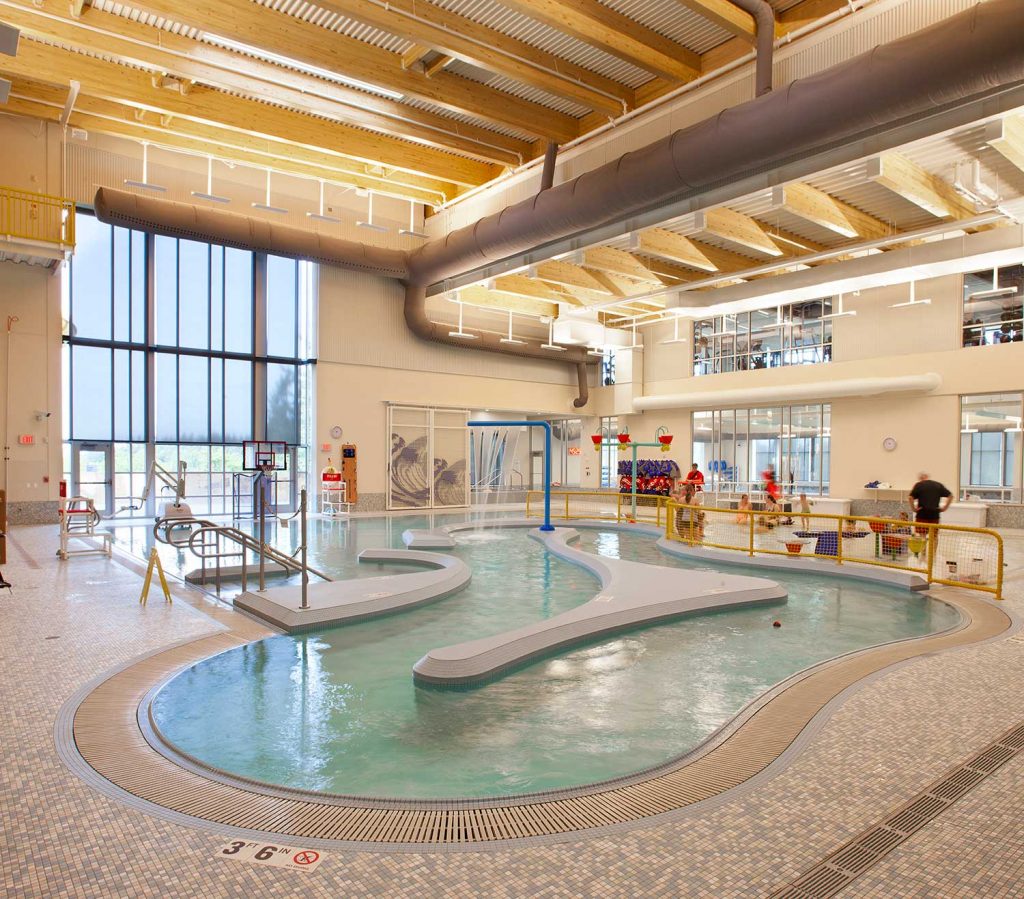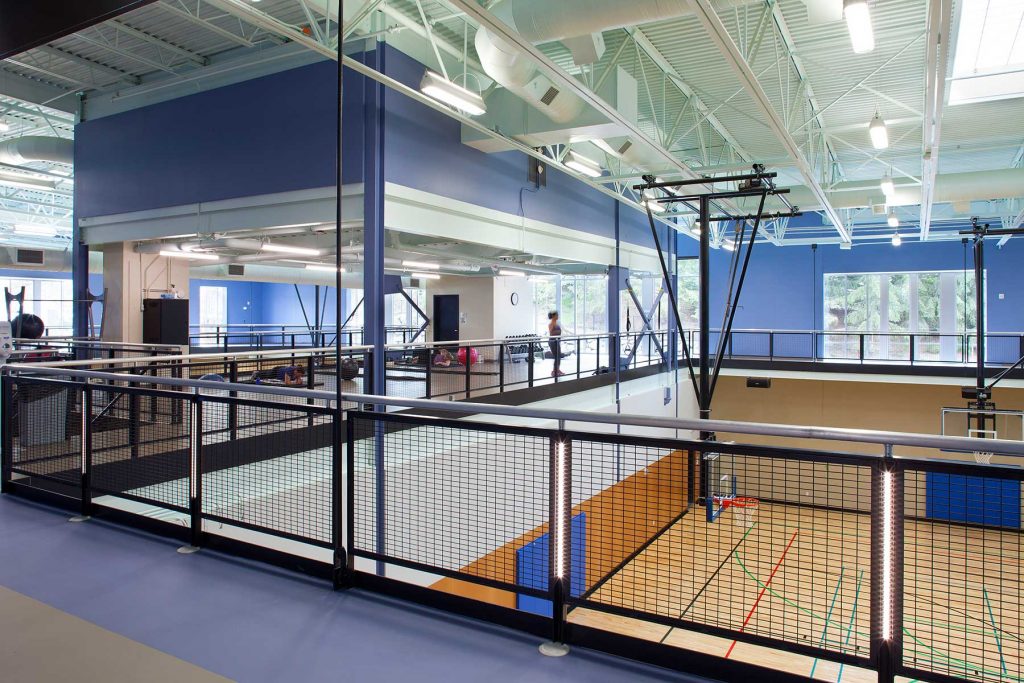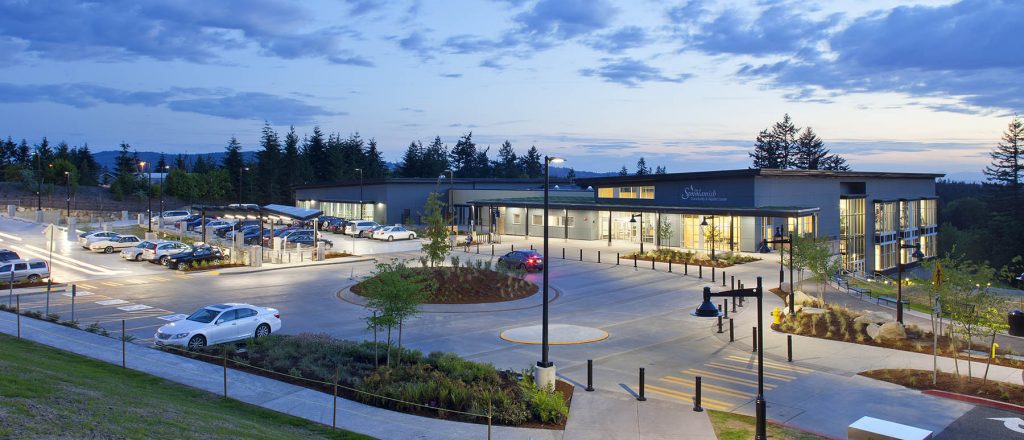In the spring of 2016, the Community and Aquatic Center in Sammamish, Washington, opened to large crowds of active adults and playful children. Created in collaboration with the YMCA, it’s a facility that realizes Sammamish’s goal of creating sustainable facilities for its growing population.
Along with architects Barker Rinker Seacat, the City of Sammamish, contractors Porter Brothers, and the YMCA (the project’s end user), Glumac had the responsibility of developing this community space. Glumac provided mechanical, electrical, plumbing, lighting design, and energy modeling. The team built the 60,000-square-foot facility adjacent to City Hall, the library, and the farmers market. It includes a six-lane pool, an activity pool, a two-story water slide, hot tub, two gyms, group fitness rooms, locker rooms, a track, and a community kitchen. The center’s location- adjacent to Sammamish’s library, City Hall and farmers’ market- enriches this community with more local engagement opportunities.
“Community buildings are gratifying because you know how they will get used,” project manager Michael Aliaga said. “They help build a legacy of engagement and vibrancy for a community.”

Lighting for Activity
In the pool space, Glumac’s Lighting Studio lead by Jesse Smith designed the first fully LED-lit pool installation in Washington and in the YMCA network. (LEDs are typically found in larger-scale projects, but the Community and Aquatic Center has roughly 90 percent LED lights throughout.) Smith designed indirect lighting over the pool, so a swimmer doing the backstroke will never have to stare at a harsh light, and the facility owners will never have to drain the pool to service the lights.
Smith also made the lighting controls flexible throughout the facility, in order to allow the Community and Aquatic Center to host many different events. For example, in the gym, Smith designed light fixtures that could light at 1/3, 2/3 or full brightness. That means facility operators can use more light for gym-goers on a cloudy day or less light for a more intimate event like a lecture.
“The design really allows for a wide breadth of usage,” Smith said. “While the community changes and evolves, the space can adapt to serve its needs, even if we don’t know what those needs are at this point.”

Energy Modeling
Glumac’s energy team helped reduce the project’s carbon footprint. Pool spaces typically use a lot of energy, due to the need to constantly move air, in order to push out chlorine particles and keep the air clean and safe for swimmers. So, Glumac modeled a combination of systems that used heat recovery in the pool area and a high-efficiency HVAC system in the support spaces, in order to minimize energy use.
Additionally, the exercise rooms have dimmers, so users can light the space up for karate practice or lower the lighting for meditation. Not only does this allow for a more positive user experience, but having the option for lower lighting results in energy savings.
Glumac’s plumbing staff teamed up with the project’s civil engineers for innovative water conservation. The civil engineers established paths for rainwater to collect not only from the roof but from the entire site. From there, Glumac assisted with the graywater’s filtration and distribution, and it is used for flushing the entire building’s toilets.

